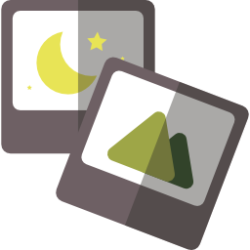Get Your Readers to Spread Your Newsletter

Why?
If they seem to be part of the production, they’ll show off to their friends.
How?
Include the following in your newsletter, something like this: “With a few clicks and in one minute, you can have your very own version of this newsletter. You can pick and choose what to include in it from a variety of articles, videos, quotes, etc. Then you can share your very own version with anyone you think might like it. Click here to get your own version where YOU are the acknowledged editor.” When they click they see a web page that shows the same newsletter with options to change a few parts of it, add other content that you already have for them to include, and even let them write a paragraph or two of their own. Then they can either type in email addresses of who they want to send it to (or use their contact list), or send it to themselves to be later forwarded to others. The newsletter is showing (and is sent with) their name prominently shown as the editor, just like the original newsletter they received had someone’s name showing as the editor.
Should I Eat That?

Why?
Help you keep you diet.
How?
An app. Take a picture of what you want to eat and the app will recognize it and tell you if you can eat it.
The Next Step in Testimonials

Why?
You know they are a useful in influencing your audience. Why not take it a step further?!
How?
Instead of just using a short quote from a happy customer, build a whole subsite for your best ones. In their own blog (running under your domain), they can have a place where they can tell their own story and how it connects to your product and their success and happiness – help them express themselves. Give them this platform and help them create the content. Interview them (preferably on video) and use the materials to create blog posts, audio file and video clips that will show both you (and your brand) and them in a good light.
Build Cult Following for a Brand – an Experiment

Why?
The perfect target audience is:
1. Irrationally passionate;
2. Plenty in number;
3. Easily reached.
How?
Use the same techniques used by cult leaders and mystery entertainers, to build a following for your brand. Techniques like: insider language patterns and phrases, us against them (other brands and their followers), segregation, hierarchy, repetitive tasks, inner circles, assimilation, etc.
A Little Technique to Avoid Reader Fatigue

Why?
You published an article, and now you promote it on multiple platforms (email, Facebook, LinkedIn, Twitter, etc.) It might take many touches with your reader to get them to read it, but you might be overdoing it at the same time.
How?
Make sure you use a different image with each communication/ touch point. If you don’t, you run the risk of the reader thinking they already read your article, just because they saw the same image so many times. This is especially true if you publish frequently.
